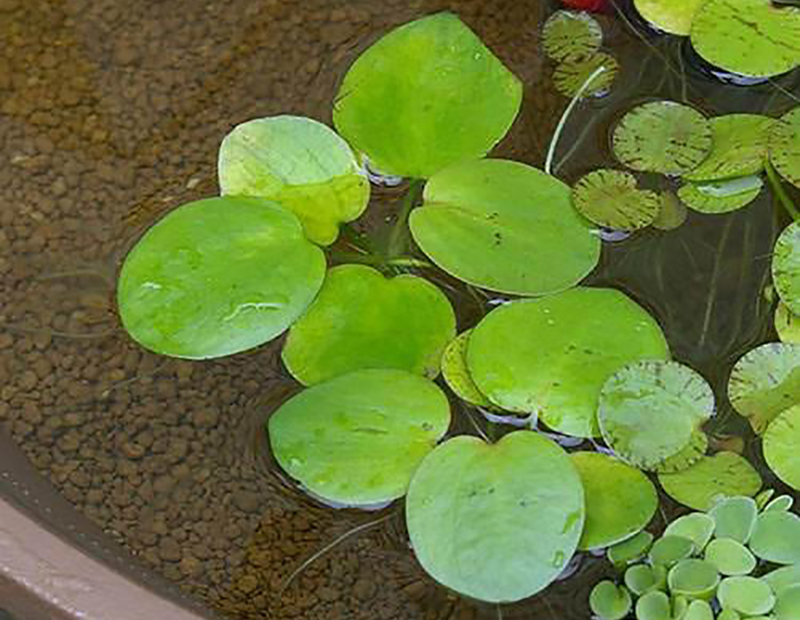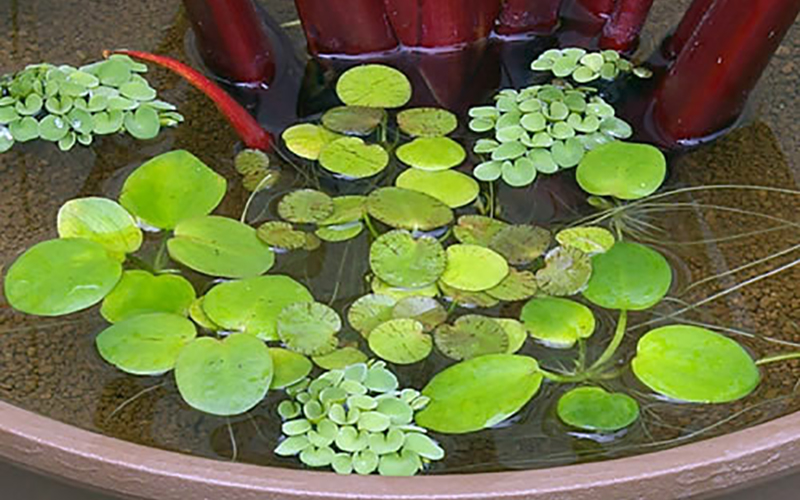rearing
Amazon Frog Pit is one of the water plants belonging to the genus Limnobium in the family Cercidiphyllaceae. Its name comes from the meaning of "frog" (frog = frog) and "pit" (pit = hole or hollow). In this article, we will explain the characteristics and how to grow Amazonian Frog Pit.
Table of Contents

The Amazon Frog Pit is one of the water plants belonging to the Limnobium genus of the family Cercidiphyllaceae.
The name comes from the meaning of "frog" and "pit," meaning a hole or pit, and means a water plant that is just the right size for frogs to rest in. It is also sometimes called "Amazonian frogbit" or "South American frogbit.This site is referred to as the "Amazon Frog Pit".
The Amazon Frogpit is a water plant that originates from the tropical regions of South America. Amazonian Frog Pit is a member of the floating plant family that produces 5 to 8 round leaves about the size of a 500 yen coin. It also produces round rootlets 3 to 5 cm in diameter in a radial pattern, and the roots are long and hang down into the water. The leaves can repel water, and the underside of the leaf is spongy, which keeps it buoyant.
The Amazon Frog Pit is an easy-to-handle type of aquatic plant for beginners. It prefers a water temperature of around 20 to 30 degrees Celsius. It prefers slightly acidic to neutral water quality. The Amazon Frog Pit prefers strong light, so it is best to choose a location that receives as much direct sunlight as possible.If there is not enough light, the leaves will lose moisture and gradually lose vigor. It also prefers a warm environment, so it should be kept indoors during the winter to avoid direct exposure to cold air or frost. It is best to grow it outdoors except during the winter season. It is often grown together with the Photinia because of the similarities in the way they are grown.

Amazon frog pits like strong sunlight, and if grown in a sunny location, they will grow rapidly, but if the old leaves are left behind, it will be difficult for the new leaves to receive nutrients. If this happens, the new leaves will not be able to grow, and the appearance of the plant will become worse and worse. To avoid this, tear off the old leaves and discard them.Frequent care will improve its appearance and promote its growth, thus reducing the risk of it dying.
If the roots are also having trouble growing, you may cut them off, leaving about 3 to 5 cm. If the roots grow too long, they will become entangled with the roots of the adjacent Amazon Frog Pit, making it difficult to untangle them, and if you have a lot of Amazon Frog Pits, it is rare for an accident to occur if the roots grow too long and a creature runs into them. If you are concerned about this, you should take care of it as soon as possible.
The Amazon Frog Pit is a very easy plant to grow. As long as the environment is well maintained, the Amazon Frog Pit will grow runners (thin tubes) and have offspring. When the seedlings have four or five leaves, the tube is cut off and the plant becomes a single Amazon Frog Pit.
In addition, Amazon frog pits will increase in a short period of time as long as they are in a place where sunlight and other light can be secured, so it will be possible to secure a stable amount by speeding up the rotation by discarding old plants. In addition, if you prefer a smaller size Amazon Frog Pit, we recommend that you can create a situation where only the smaller size Amazon Frog Pit is floating in the water by leaving the child plants and moving the parent plants to a different container.

Amazon frog pits, like hotei grass, are water plants that easily grow roots. Therefore, when placed with goldfish, they will eat the roots that have grown up as food. This solves the problem of roots getting entangled with each other. The goldfish will also serve as food for the roots, which will inevitably reduce the amount of food that humans need to feed them, thereby decreasing the deterioration of water quality.
In addition, for those who keep their fish outdoors, for example, an Amazon Frog Pit can prevent them from being seen by birds and other exotic animals. Recently, more and more people are putting Amazon Frog Pits in with their goldfish and other animals. For those who keep their goldfish in small tanks or pots rather than large water lily pots, floating plants such as Photinia are often too large and show too much of a presence. It is also popular among those who have shied away from floating weeds. If you are thinking of adding floating plants, please consider the Amazon Frog Pit.